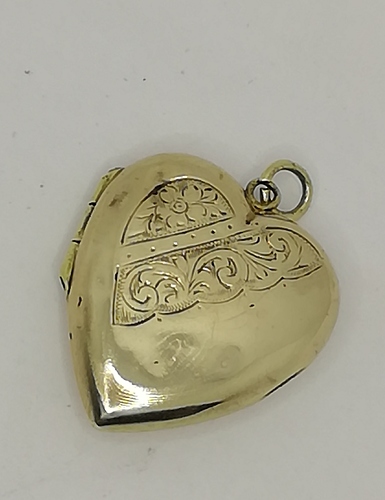I’ve been asked remove some dents from a gold locket. The metal is very thin. I’ve secured it face down in a tar bowl and tapped it very carefully with dapping rods. Some of the dents are gone but there is quite a large dink in a fold of metal I can’t get to
Any ideas welcomed. I’m not aiming for perfection in a 100 year old piece, it takes away it’s history
Patsy
I have formed punches to the shape of a similar area to apply a more symmetric force to the deformed
area
Thank you I will try this. I have some plastic moulding compound that sets hard so I should be able to make a template
Patsy
Any chance we can get a picture of the damage?
Aaron
I’m not suggesting this particular tool set, but we learned to use wooden block and punches exactly like these to reshape watch cases when i was at Bowman. The set was just the block and punches, and did not include a hammer.
You could simply hollow out a piece of scrap wood, and make a simple punch from wooden down, for just one use. You need to support the metal you wish to not distort, while gently trying to push the dent back into place from inside.
Sometimes this required removing the hinge pin, to gain full access to the case half.
I see my Auto-Corrupt changed my wording, again. That was make a punch from a wooden dowel, not down.
Thank for this I will get myself some wood and get whittling
Patsy
I agree with what was said about a purpose made wooden punch and block. Native American silversmiths worked early on with stumps into which depressions were made to “bump up” various jewelry pieces. I haven’t done any of this kind of repair on jewelry, but on brass instruments, one would carefully knock out the dent from inside (on the concave side) and then smooth over the area on the outside (convex side) with a burnisher. You try hard to get the shape of your punch to match the intended shape of what you’re working on the inside, but you overshoot just a little and then that area is easier to reach on the outside and easy to burnish down to a smooth surface and a curve that matches the rest of the piece. Perhaps this was obvious to you already…
I like to use wooden punches for this level, the punch should not make more damage than was there. Also rawhide dog chew rods work well.
Hello Charles,
Nice to see you here again and to profit from your vast knowledge…my dogs are not gonna be happy about me filching their chews…but a great tip! -royjohn
Neither will mine but it’s worth a try. Do I have to chew them a bit first, or get my golden retriever to do it for me. (Joke)
Hi! No one has mentioned using wax as a filler or support when doing a repair on thin metal. It is softer and easier to work with than pitch. Different types of wax vary in hardness and even household candle wax can work…It can be supported from inside or outside. In hot weather if it is too soft pop the piece in the refrigerator or freezer for a few minutes. Gentle taping or smoothing with metal, wood or plastic can work. Remove by melting and get rid of any remaining wax with solvents. It is a lot less messy than pitch and can be used sometimes to hold pieces for texturing or light chasing.
Thankyou everyone for you help. The locket looked really good in the end.
Patsy
